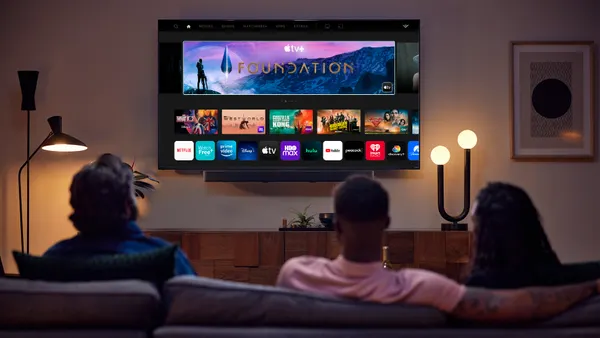The following is a guest post by Florian Kahlert, CEO of Helixa. Opinions are the author's own.
A few days ago, I spoke with a market researcher for a large brand about the use of brand trackers in 2020.
She had just signed up for a new brand-tracking study with a vendor and their first year of tracking was 2020. It sparked a conversation about the value of trends, the changes that have taken place and how marketers are coping with what has been truly a strange year, to say the least.
The year 2020 was, of course, unlike any other that we or even our parents have ever experienced. Now, as people are starting to look forward more optimistically, it's a good time to take stock of what happened to consumers and retail and what it might mean going forward.
To begin with, not everything was as it seems.
Despite empty malls and highly publicized bankruptcies in the retail space, retail sales actually grew 6.7% last year, according to the National Retail Foundation (NRF), nearly twice as much as in 2019 and twice what had been forecasted before the pandemic.
Furthermore, boosted by pent-up demand and fueled by the reopening of the economy, the NRF is forecasting that retail sales this year will grow between 6.5% and 8.2%.
So what explains this?
Consumers turned into explorers again
Before the pandemic, brand attachment and shopping behavior were highly predictable. They typically correlated to some extent with demographics and life stages. Based upon this, brands invested significant dollars to build long-term trackers and models to keep their existing customers and acquire new ones.
But something unexpected happened during the pandemic: consumers opened up to brand switching.
More than 40% of consumers, according to a study by McKinsey, said that they tried a new brand or new way to shop for things they needed during lockdowns. That number is surprisingly high. It points to significant changes in consumer behavior and may indicate that new habits and brand relationships are being formed. It also might make existing trackers and models less accurate.
The rules of the game have changed
This has significant consequences for brand marketers.
Firstly, the data they used to rely on to make decisions may not be the best data anymore, or at least until these new trends solidify.
Secondly, the brands need to understand what enticed this new customer. Was this a temporary change (e.g., online buying out of necessity or temporary focus on home improvement to set up the home office) or is it more permanent?
Thirdly, marketers need to find ways to understand who those new brand converts are. How likely are they to stick around once things settle into a "new normal"? How are those new customers different from the ones they have?
Change always offers opportunity
The conundrum really is that the answers cannot necessarily be found in the traditional data.
Trying to relate changing habits to the old shorthand of life stages and demographics that we used to use is no longer valid. We will need to understand these new consumer segments in all their complexity. This is critical not just for the marketing and media teams, but also for the innovation and product teams.
The big opportunity that is being presented is to make those new customers who are exploring stick around by giving them reason to do so. But equally important, you need to really understand who they are and then go out and find even more.
By all accounts, opportunities for growth will abound over the next few months. But with a consumer that has undergone much and changed much over the past year, we need to relearn who they are.













